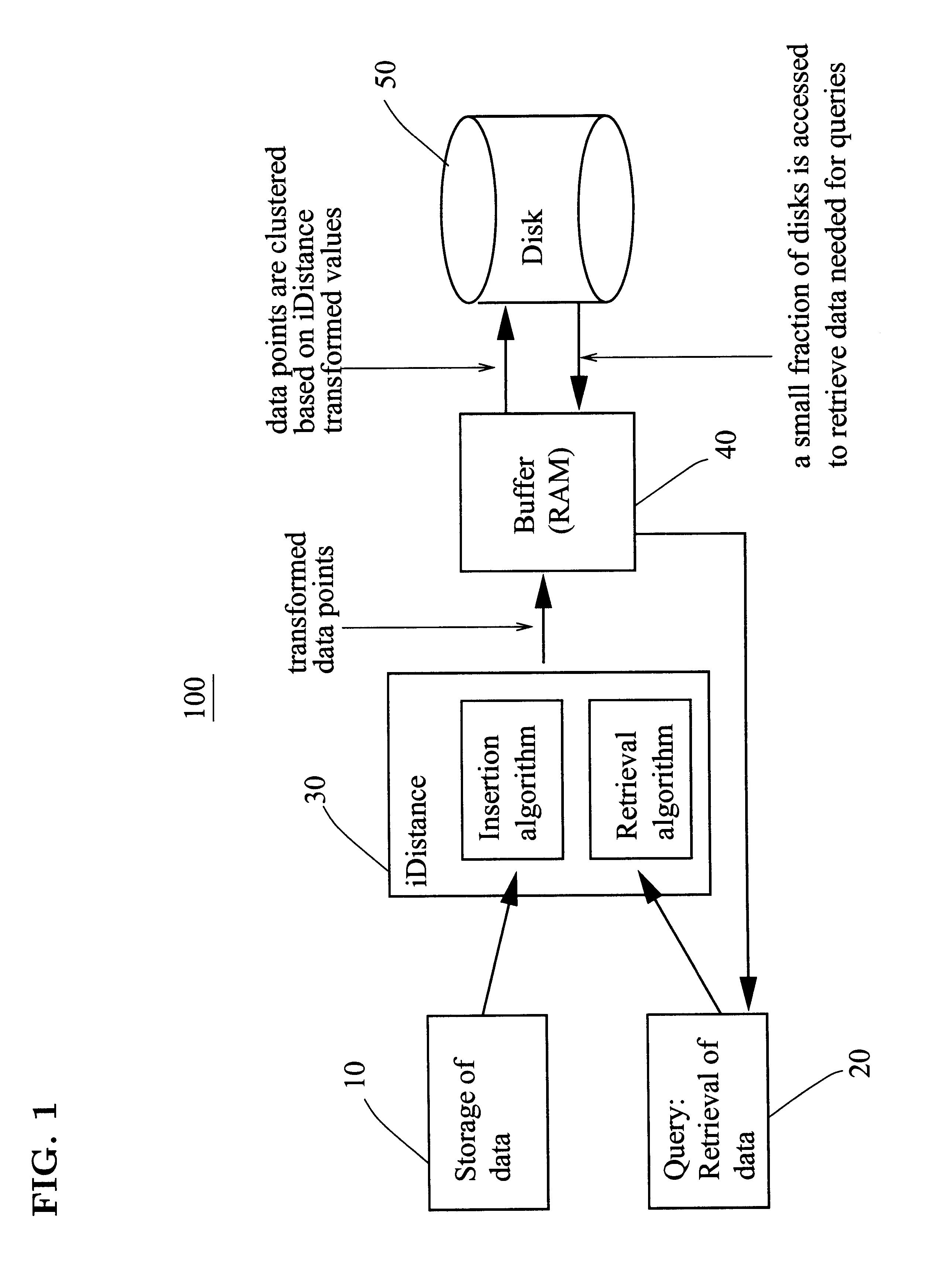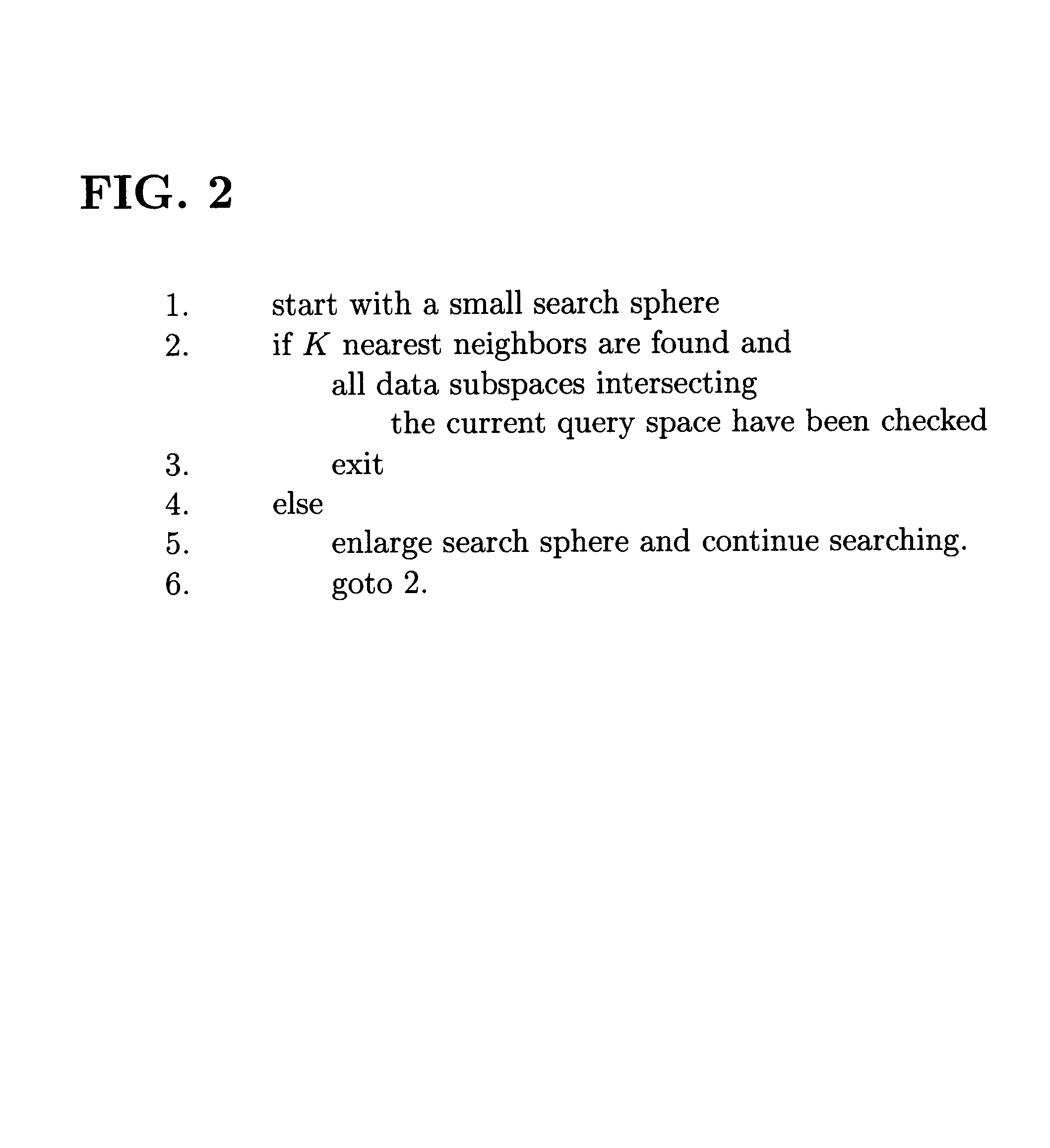Transformation-based method for indexing high-dimensional data for nearest neighbour queries
a transformation-based method and query technology, applied in the computer field, can solve the problem that most of the existing approaches cannot produce any answers
- Summary
- Abstract
- Description
- Claims
- Application Information
AI Technical Summary
Benefits of technology
Problems solved by technology
Method used
Image
Examples
case 1
Sphere(q,r) Contains all the Data Points in S
Let p.sub.furthest =furthest(S,q).
For all points p in S, such that dist(p,q)<dist(p.sub.furthest,q). Since p.sub.furthest is inside sphere(q,r), dist(p.sub.furthest,q).ltoreq.r. We note that it is not necessary to check sphere(q,r+.DELTA.r) since any point bounded by the region with radii r and (r+.DELTA.r) will be larger than the Kth nearest point found so far. Hence the answers are the Kth nearest. and the program stops.
case 2
S Contains a Point, u, Outside Sphere(q,r)
This occurs when a point lies in the strip that need to be checked, and it happens to be the Kth nearest so far. dist(u,q)>r, and hence r has to be enlarged: r=r+.DELTA.r Suppose the enlarged search sphere encounters a point v in the newly enlarged region, dist(v,q)<r. If dist(v,q)<dist(u,q), then u will be replaced by o. o is the point furthest from q: p.sub.furthest =o; Now, since dist(o,q)<r, all the answers are the Kth nearest and the program stops. .quadrature.
5.3 Splitting the Data Space and Selection of Reference Points
To support distance-based similarity search, we need to split the data space into partitions and for each partition, we need a representative point where all data points in that partition can be made reference to. The way the data space is split, and the choice of the reference points can affect performance. Here, we shall look at two partitioning methods, and their corresponding reference point selection heuristics.
5.3...
PUM
 Login to View More
Login to View More Abstract
Description
Claims
Application Information
 Login to View More
Login to View More - R&D
- Intellectual Property
- Life Sciences
- Materials
- Tech Scout
- Unparalleled Data Quality
- Higher Quality Content
- 60% Fewer Hallucinations
Browse by: Latest US Patents, China's latest patents, Technical Efficacy Thesaurus, Application Domain, Technology Topic, Popular Technical Reports.
© 2025 PatSnap. All rights reserved.Legal|Privacy policy|Modern Slavery Act Transparency Statement|Sitemap|About US| Contact US: help@patsnap.com



